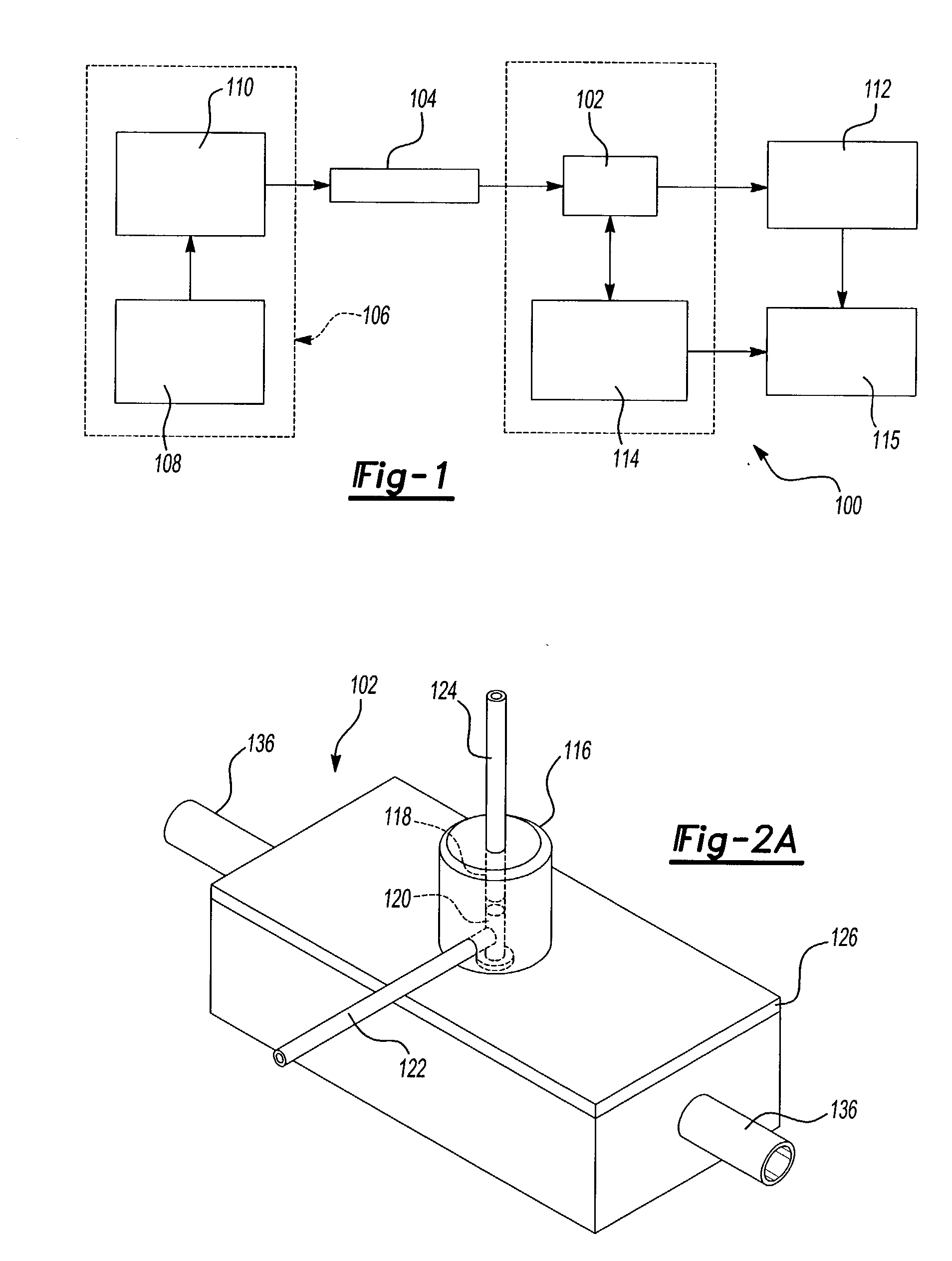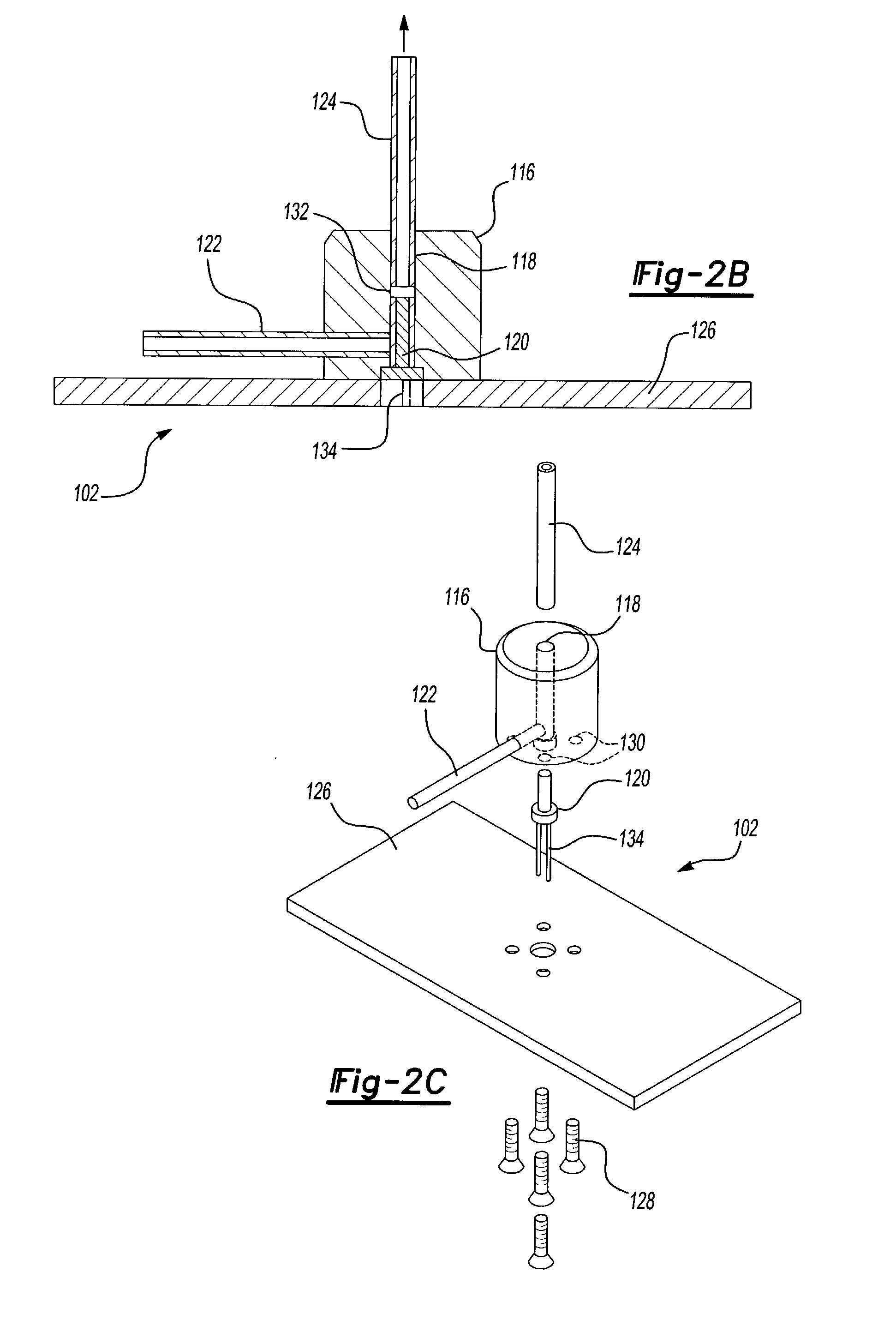Flow detectors having mechanical oscillators, and use thereof in flow characterization systems
a flow detector and mechanical oscillator technology, applied in the direction of analyzing fluids using ultrasonic/ultrasonic/infrasonic waves, processing detected response signals, etc., can solve the problem that the known detection system is not well suited for application beyond the traditional flow-characterization platform
- Summary
- Abstract
- Description
- Claims
- Application Information
AI Technical Summary
Benefits of technology
Problems solved by technology
Method used
Image
Examples
example 2
[0110] Referring to FIGS. 4A and 4B, there is shown a plot of signal versus time in use of the present flow detector for monitoring the separation of a sample (e.g., polymer sample) mixture. In this example, two mixtures (corresponding respectively to that depicted in FIGS. 4A and 4B) of narrow polystyrene standards of different molecular weights (1--7.5M, 2--2.5M, 3--840k, 4 --320k, 5--150k, 6--60k, 7--30k, 8--11k, 9--3k, 10--580) are injected into a system as in Example 1 in order to compare responses of TFD and ELSD detectors as a function of molecular weight. Although ELSD corresponds to concentration, TFD response is molecular weight sensitive. Therefore, it is expected that viscosity contributes significantly to the TFD response, in addition to dielectricity and density changes of environment in the detector. The zoomed-in portions of the chromatograms shown in FIGS. 5A and 5B correspond to top of the peak 3 in the chromatogram of FIG. 4A, for both the TFD and ELSD data respec...
example 3
[0112] Referring to FIGS. 6A and 6B, there are shown representative plots obtainable from the use of the present flow detector for sensing viscosity. It is known from theory that logarithm of intrinsic viscosity grows linearly with logarithm of molecular weight. Theoretical TFD responses obtained for samples (e.g., polystyrene samples) of different molecular weight in a mobile phase (such as THF, from the experiment described above) are calculated and plotted in FIG. 6A. More specifically, FIG. 6A represents the viscosity-MW (M) relationship as calculated using Mark Houwink equation: [.eta.]=K.times.M.sup..alpha., with the constants for polystyrenes in THF at room temperature taken from the Polymer Handbook (K=0.011 mL / g; [.eta.]=0.725).
[0113] The plot of FIG. 6B correlates in similar way the molecular weight with the TFD response normalized for concentration by dividing it with the ELSD response (concentration detector). Linearity of the TFD / ELSD response demonstrates clearly, that...
example 4
[0114] Referring to FIG. 7, there is illustrated a representative plot for calculating molecular weights from TFD response in accordance with the present invention. Using a simple version of the equation described above allows for a calibration plot as in FIG. 7 that could be used for calculation of molecular weights directly from TFD response by calibrating the system versus concentration signal. There is also a possibility of obtaining the molecular weight information using the TFD only, using two responses at different frequencies or from different tuning forks (possibly in the same cell) varying in the concentration and viscosity portions of the signal.
PUM
| Property | Measurement | Unit |
|---|---|---|
| frequency | aaaaa | aaaaa |
| frequency | aaaaa | aaaaa |
| frequency | aaaaa | aaaaa |
Abstract
Description
Claims
Application Information
 Login to View More
Login to View More - R&D
- Intellectual Property
- Life Sciences
- Materials
- Tech Scout
- Unparalleled Data Quality
- Higher Quality Content
- 60% Fewer Hallucinations
Browse by: Latest US Patents, China's latest patents, Technical Efficacy Thesaurus, Application Domain, Technology Topic, Popular Technical Reports.
© 2025 PatSnap. All rights reserved.Legal|Privacy policy|Modern Slavery Act Transparency Statement|Sitemap|About US| Contact US: help@patsnap.com



